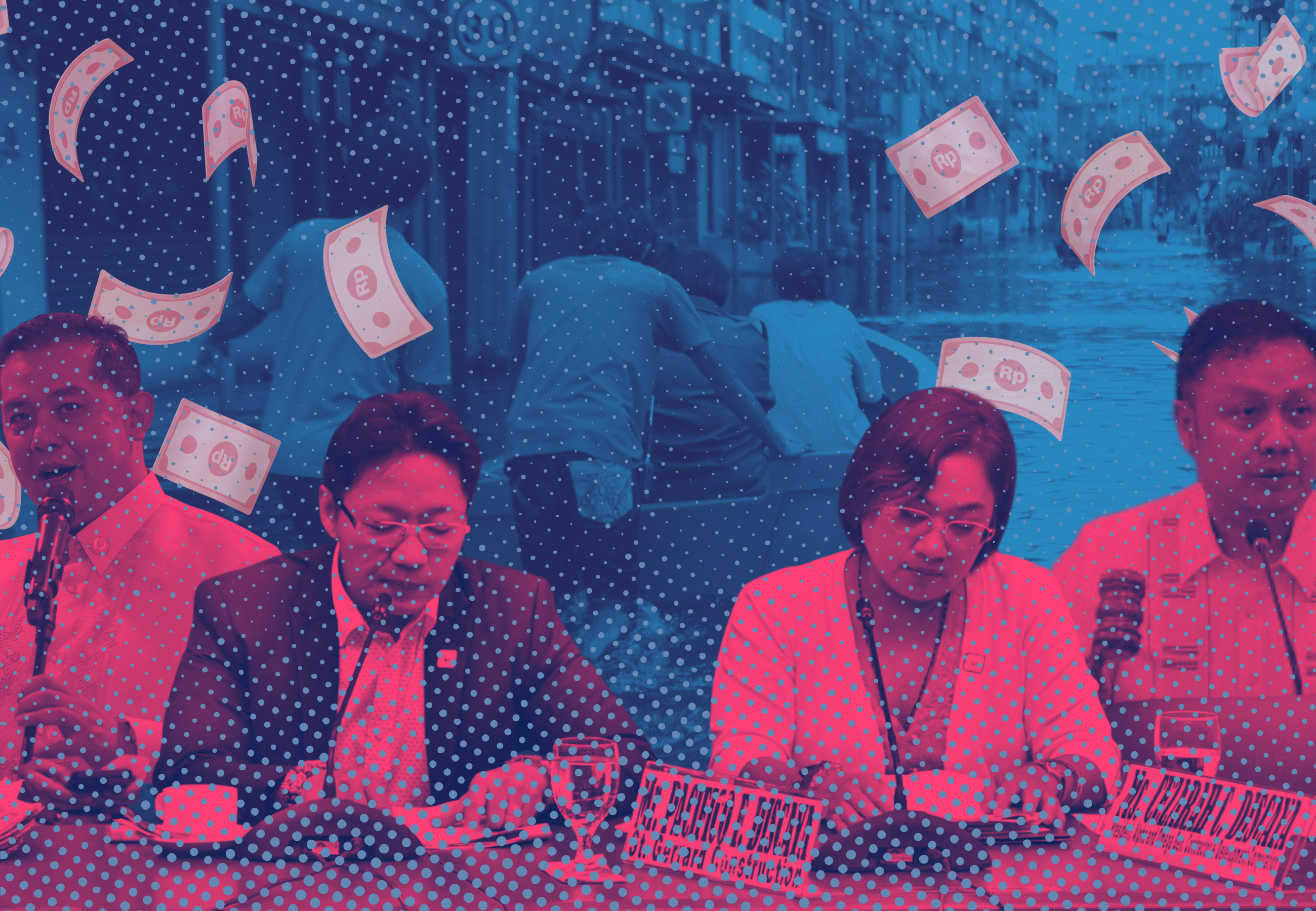Philippine flood-control scandal: Official neglect of people’s lives

IT WAS only in September 2025 that the fraudulent use of flood control funds became public knowledge. The scandal overshadowed other concerns, with the Senate Blue Ribbon Committee providing explosive televised testimony of the fraudulent diversion of funds for flood control infrastructure into private pockets of politicians and DPWH officials.
President Ferdinand Marcos Jr. formed the Independent Commission for Infrastructure(ICI) to investigate the loss of billions of pesos, which the national budget had allocated to address the annual inundation of Metro Manila and other areas of the country come typhoon season.
The revelation struck a deep public nerve: in a country where floods kill, displace, and destroy livelihoods each year, the loss of funds meant to prevent these tragedies signified not just graft—but government neglect of life itself.
Philippine media sustained coverage of the controversy — but a closer look shows that while some outlets excelled in document-driven reporting, others relied too heavily on soundbites and spectacle.
Still, coverage has helped frame the issue as more than just a corruption scandal—it is an indictment of official disregard for public safety, and a reminder that every peso stolen from flood-control projects translates into homes washed away and lives lost.
Escalating Revelations: From Allegations to Audits
On September 1, Sarah Disaya appeared before the Blue Ribbon Committeeee and confirmed her 28 luxury cars. She also admits that she and her husband are owners of nine construction firms that sometimes bid against each other for government projects. Witnesses, including contractors and former DPWH engineers, described the systemic kickbacks along with the delivery of substandard or “ghost” projects and other anomalies involving members of Congress and companies contracted to build the necessary infrastructure to address perennial flooding.
Hearings dominated front-page headlines and primetime news from August until now. Testimonies named lawmakers and officials, although witnesses withheld documentary proof, expressing fear for their safety.
Meanwhile, the Commission on Audit (COA) ordered a performance audit and by mid-September, had filed fraud audit reports on Bulacan projects worth PHP360 million. Auditors cited mismatched project coordinates, missing documentation, and “ghost” structures. The findings were formally turned over to the ICI.
The ICI, created by executive order on September 11, began field inspections and coordination with COA, the Ombudsman, and the Anti-Money Laundering Council (AMLC). Later in the month, courts issued freezing orders on assets linked to contractors under scrutiny.
Media’s performance: strengths and gaps
Coverage of the flood-control scandal highlighted the capacity of Philippine media in handling complex stories involving official corruption, demonstrating investigative skills while other media reports limited themselves to recording the exchange during Senate hearings.
Rappler and Inquirer.net set the pace with consistent, detailed in-depth pieces. The Philippine Center for Investigative Journalism and Philstar.com also published reports with context and analysis.
Inquirer.net’s special reports and its three-part series, which started as early as August 29, projected a comprehensive picture of systemic fraud, tracing billions in ghost projects and dubious budget insertions. The reports mapped networks of companies involved in the scandal, revealing collusion with lawmakers such as Zaldy Co, including detailed accounts of how funds were channeled into ghost projects and flood-control contracts, and how campaign financing from businessmen like Maynard Ngu helped sustain these arrangements.
Inquirer.net, PCIJ, and TV5 situated the flood-control revelations in the broader context of corruption cases throughout various administrations that have evaded prosecution, underscoring how the cycle of scandal and impunity continues without institutional accountability.
Rappler also examined contractor networks, from the Discayas’ business model to Zaldy Co’s ties with Sunwest and the Romualdez district, up until the daughter of former DPWH Secretary Manuel Bonoan. Its on-site reports in Marikina and Caloocan tested claims of “completed” projects and revealed glaring gaps between paper and reality.
Its podcast series on the issue pointed to the red flags of Discaya accounts. By combining investigative data, multimedia storytelling, and field evidence, Rappler showed the full capacity and range of digital reporting to sustain public scrutiny across platforms and phases of investigation.
While other media followed up on developments daily, ABS-CBN did well to provide a clear timeline of the lengthy and complex issue. Meanwhile, GMA’s KMJS continued its on-site investigations, exposing faulty dikes and “shadow” projects.
TV5’s News Explained regularly included short explainers to break down complex legal and audit developments, such as the creation of the ICI, its early field inspections, and the turnover of COA findings to the Ombudsman and AMLC for possible case buildup.
Ghost projects, real consequences
Flood-control projects are lifelines for communities repeatedly battered by typhoons. Fraud and ghost projects involve more than the waste of taxpayers’ money. They endanger lives—each delayed or falsified project means floodwaters rising higher, evacuation centers overflowing, and families losing everything again and again. These issues contribute to the hardship that bad weather causes to so many Filipinos, contributing to loss of lives. This is an area that calls for journalists to do their best in providing information about the official neglect of public safety. Journalists must expand the scope of reporting, chase the paper trail, do the sums, and show how those in authority have failed to protect the people.
Overall, the attempt of news organizations to expand the scope of coverage beyond recording statements and soundbites. Reports have established leads that media should explore. Such information empowers the people to press relevant agencies to prepare cases for prosecution.
At this point, the challenge is not simply to expose corruption but to establish accountability. This is a long story that media must track. “Ghost projects may fade from the front pages, but the consequences are real and will continue to haunt the living.
Leave a Reply